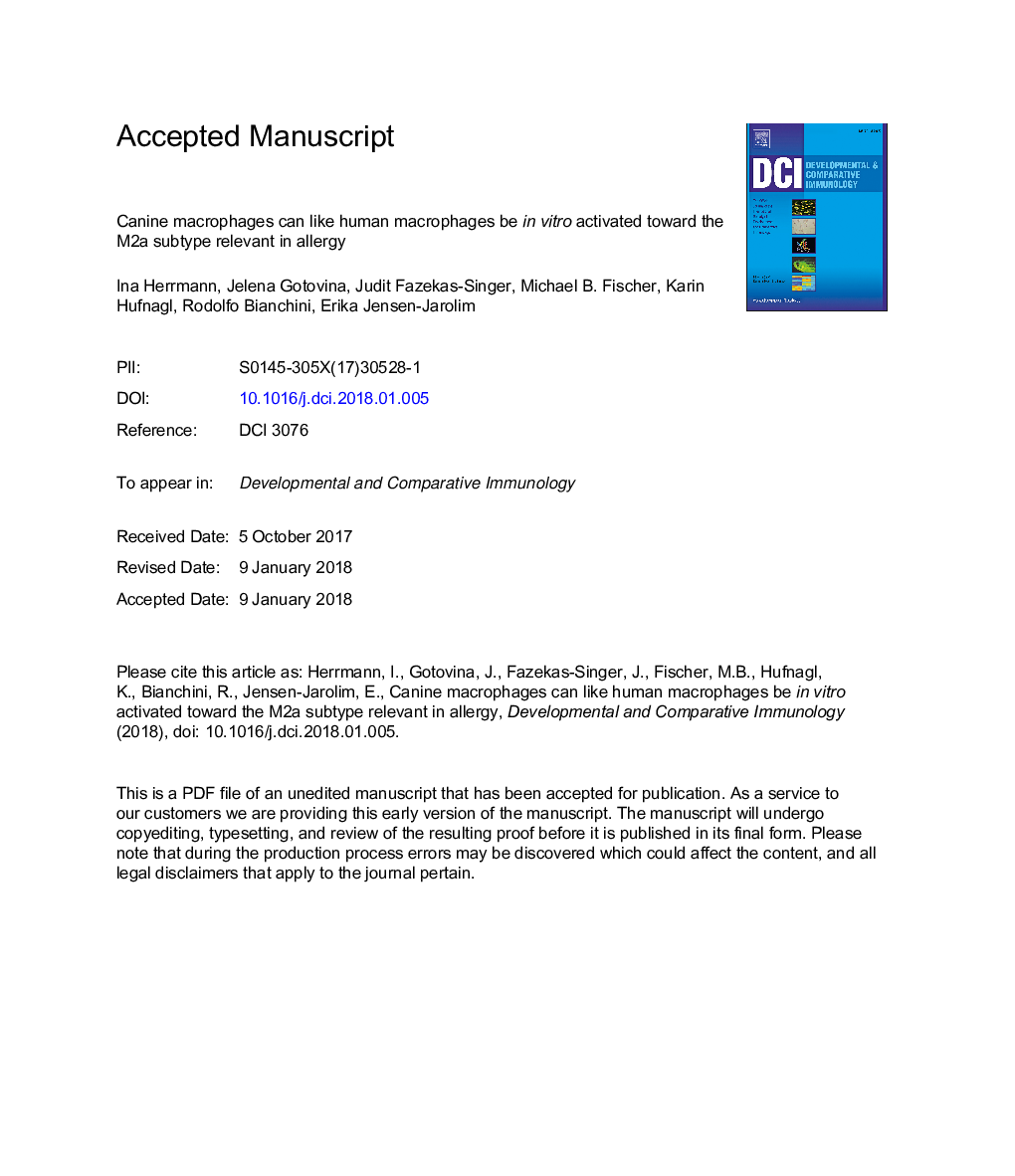| Article ID | Journal | Published Year | Pages | File Type |
|---|---|---|---|---|
| 8497795 | Developmental & Comparative Immunology | 2018 | 22 Pages |
Abstract
The M2a subtype of macrophages plays an important role in human immunoglobulin E (IgE-mediated allergies) and other Th2 type immune reactions. In contrast, very little is known about these cells in the dog. Here we describe an in vitro method to activate canine histiocytic DH82â¯cells and primary canine monocyte-derived macrophages (MDMs) toward the M2a macrophages using human cytokines. For a side-by-side comparison, we compared the canine cells to human MDMs, and the human monocytic cell line U937 activated towards M1 and M2a cells on the cellular and molecular level. In analogy to activated human M2a cells, canine M2a, differentiated from both DH82 and MDMs, showed an increase in CD206 surface receptor expression compared to M1. Interestingly, canine M2a, but not M1 derived from MDM, upregulated the high-affinity IgE receptor (FcεRI). Transcription levels of M2a-associated genes (IL10, CCL22, TGFβ, CD163) showed a diverse pattern between the human and dog species, whereas M1 genes (IDO1, CXCL11, IL6, TNF-α) were similarly upregulated in canine and human M1 cells (cell lines and MDMs). We suggest that our novel in vitro method will be suitable in comparative allergology studies focussing on macrophages.
Keywords
PBSImmunglobulinM1 macrophageM-CSFphorbol 12-myristate 13-acetateGM-CSFDCsNTCFBSPMAMDMsAllergyinterleukinRecombinantNo template controlRoom temperatureMelting Temperaturefetal bovine serumDendritic cellsCaninePhosphate buffered salinepolarizationmacrophage colony-stimulating factormonocyte-derived macrophagesComparative
Related Topics
Life Sciences
Biochemistry, Genetics and Molecular Biology
Developmental Biology
Authors
Ina Herrmann, Jelena Gotovina, Judit Fazekas-Singer, Michael B. Fischer, Karin Hufnagl, Rodolfo Bianchini, Erika Jensen-Jarolim,
